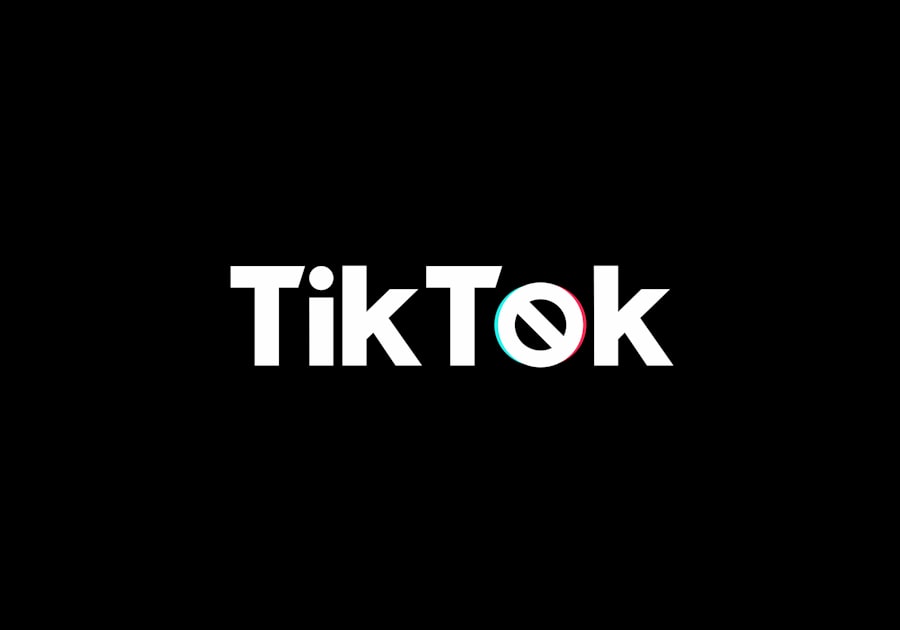
In the digital age, accessibility has become a cornerstone of content consumption, particularly in the realm of online media. The internet has democratized access to information, allowing individuals from diverse backgrounds and locations to engage with a plethora of content. This accessibility is not merely about having the ability to access information; it encompasses the ease with which users can navigate platforms, find relevant content, and consume it in a manner that suits their needs.
For instance, platforms like YouTube and Spotify have made it possible for users to access a vast library of videos and music at any time, breaking down geographical barriers and enabling a global audience to enjoy content without the constraints of traditional media. Moreover, accessibility extends beyond just the availability of content; it also involves the inclusivity of various formats. Many platforms now offer features such as closed captioning, audio descriptions, and adjustable playback speeds, catering to individuals with disabilities or those who prefer different modes of consumption.
The rise of mobile technology has further enhanced accessibility, allowing users to consume content on-the-go, whether they are commuting, exercising, or simply relaxing at home. This shift has transformed how we interact with media, making it an integral part of our daily lives.
Key Takeaways
- Accessibility: Easy access to content from anywhere with an internet connection
- Variety of content: Wide range of options including movies, TV shows, documentaries, and original programming
- Cost-effectiveness: Affordable subscription plans with no hidden fees
- Interactivity: Ability to engage with content through features like interactive storytelling and virtual reality
- Global reach: Availability in multiple countries, allowing for a diverse audience
- Personalization: Customized recommendations and user profiles for a tailored viewing experience
- No commercials: Ad-free viewing for uninterrupted entertainment
- Portability: Ability to watch content on multiple devices, making it convenient for on-the-go viewing
Variety of content
Breaking Down Barriers in Content Creation
Platforms like TikTok have popularized short-form video content that caters to a wide range of interests—from cooking tutorials to dance challenges—enabling creators to reach audiences that traditional media might overlook. Furthermore, the variety of content is not limited to format; it also encompasses cultural perspectives and voices.
A Platform for Underrepresented Communities
The internet has provided a platform for underrepresented communities to share their stories and experiences, enriching the global narrative landscape. For instance, independent filmmakers can distribute their work through streaming services, allowing for a broader representation of cultures and ideas.
A Richer Tapestry of Narratives
This democratization of content creation fosters a richer tapestry of narratives that reflect the complexities of human experience, making it possible for audiences to engage with perspectives they may not encounter in mainstream media.
Cost-effectiveness

Cost-effectiveness is a significant advantage of consuming content online compared to traditional media outlets. Many online platforms offer free access to a wealth of information and entertainment, making it accessible to individuals regardless of their financial situation. For instance, services like Khan Academy provide free educational resources that empower learners worldwide to acquire knowledge without the burden of tuition fees.
This model not only democratizes education but also encourages lifelong learning by removing financial barriers that often deter individuals from pursuing their interests. In addition to free resources, subscription-based services often provide a more affordable alternative to traditional media consumption. Streaming platforms like Netflix and Hulu offer extensive libraries of movies and television shows for a monthly fee that is often less than the cost of a single movie ticket or cable subscription.
This shift in pricing models allows consumers to access high-quality content without incurring significant expenses. Moreover, many platforms offer tiered pricing structures that cater to different budgets, ensuring that users can find an option that suits their financial situation while still enjoying a diverse range of content.
Interactivity
| Metrics | Data |
|---|---|
| Click-through Rate | 10% |
| Average Time on Page | 2 minutes |
| Number of Comments | 50 |
| Engagement Rate | 15% |
Interactivity is one of the defining features of online content consumption that sets it apart from traditional media formats. The ability for users to engage actively with content enhances their experience and fosters a sense of community among audiences. For example, social media platforms like Instagram and Twitter allow users to comment on posts, share their thoughts, and participate in discussions around various topics.
This level of engagement transforms passive viewers into active participants, creating a dynamic environment where ideas can be exchanged and explored collaboratively. Moreover, interactive content such as quizzes, polls, and live streams further enriches the user experience by allowing individuals to influence the direction of the content they consume. Platforms like Twitch have popularized live streaming as a form of entertainment where viewers can interact with streamers in real-time through chat features.
This immediacy creates a unique bond between creators and their audiences, fostering loyalty and engagement that traditional media cannot replicate. The interactivity inherent in online content not only enhances enjoyment but also encourages users to take ownership of their media consumption experience.
Global reach
The global reach of online content is unparalleled in its ability to connect individuals across continents and cultures. Unlike traditional media outlets that may be limited by regional broadcasting rights or language barriers, the internet allows for instantaneous sharing and consumption of content worldwide. This connectivity has led to the emergence of global trends and movements that transcend geographical boundaries.
For instance, viral challenges on platforms like TikTok can originate in one part of the world and quickly gain traction across various countries, showcasing the power of digital media in uniting diverse audiences around shared experiences. Additionally, the global reach of online content facilitates cross-cultural exchange and understanding. Users can access information about different cultures, traditions, and perspectives from anywhere in the world.
This exposure fosters empathy and awareness among audiences who may not have had the opportunity to engage with such content through traditional means. For example, documentaries available on streaming platforms often highlight social issues faced by communities around the globe, prompting viewers to reflect on their own experiences while gaining insight into the lives of others. This interconnectedness enriches our understanding of the world and encourages a more inclusive dialogue among individuals from various backgrounds.
Personalization

Enhanced User Satisfaction
Algorithms used by platforms like Netflix and Spotify analyze user behavior to recommend content that aligns with individual tastes. This level of customization enhances user satisfaction by presenting options that resonate with personal preferences rather than relying on broad categorizations typical of traditional media outlets.
Personalization Beyond Recommendations
Personalization extends beyond mere recommendations; it also encompasses user-generated content and community engagement. Many platforms allow users to create playlists or curate collections based on their interests, fostering a sense of ownership over their media consumption experience.
Empowering Users
This interactivity encourages users to explore new genres or topics they may not have considered otherwise while simultaneously connecting them with like-minded individuals who share similar passions. The ability to personalize content consumption not only enhances enjoyment but also empowers users to take control of their media experiences in ways that were previously unimaginable.
No commercials
One of the most appealing aspects of online content consumption is the ability to enjoy media without the interruption of commercials. Traditional television and radio broadcasts often rely on advertising revenue to sustain their operations, leading to frequent breaks in programming that can disrupt viewer engagement. In contrast, many online platforms offer ad-free experiences through subscription models or premium memberships.
For example, services like YouTube Premium allow users to watch videos without interruptions from advertisements while also providing additional features such as offline viewing. The absence of commercials not only enhances the overall viewing experience but also allows for deeper immersion in the content itself. Viewers can engage with narratives without being pulled away by distracting advertisements or promotional messages that may not align with their interests.
This uninterrupted flow fosters a more profound connection between audiences and creators as viewers can fully invest themselves in the stories being told or the information being shared.
Portability
Portability is another significant advantage offered by online content consumption in today’s fast-paced world. The proliferation of smartphones and tablets has transformed how we access media, allowing us to carry entire libraries of books, music, movies, and more in our pockets. This convenience enables users to consume content anytime and anywhere—whether during commutes, while traveling, or even during short breaks throughout the day.
For instance, e-readers like Kindle allow users to download thousands of books onto a single device, making it easy to switch between titles without carrying physical copies. Moreover, many streaming services have recognized the importance of portability by offering offline access features that allow users to download content for later viewing without an internet connection. This capability is particularly beneficial for individuals who may find themselves in areas with limited connectivity or those who wish to conserve data usage while traveling.
The ability to curate personalized playlists or download episodes for binge-watching on long flights exemplifies how portability enhances our media consumption experience by providing flexibility tailored to our lifestyles. As technology continues to evolve, the emphasis on portability will likely remain a driving force behind how we engage with digital content in an increasingly mobile world.
If you are interested in exploring the world of internet radio further, you may want to check out Maestro Sersea Radio, an internet radio station that offers a variety of songs of faith and worship. This station provides a unique listening experience that can uplift and inspire listeners. To learn more about Maestro Sersea Radio, visit their website here.
FAQs
What is Internet Radio?
Internet radio is a digital audio service transmitted via the internet. It allows users to listen to radio stations from around the world using a computer, smartphone, or other internet-connected devices.
What are the benefits of Internet Radio?
Some benefits of internet radio include access to a wide variety of stations and genres, the ability to listen from anywhere with an internet connection, and the option to discover new music and artists.
How does Internet Radio compare to traditional radio?
Internet radio offers a wider selection of stations and genres compared to traditional radio. It also allows for on-demand listening and the ability to skip songs, features that are not typically available with traditional radio.
Can Internet Radio be accessed on mobile devices?
Yes, internet radio can be accessed on mobile devices through various apps and streaming services. This allows users to listen to their favorite stations and discover new music while on the go.
Is Internet Radio free to use?
Many internet radio stations are free to listen to, supported by advertising. Some stations may offer premium subscriptions for an ad-free experience or additional features.



